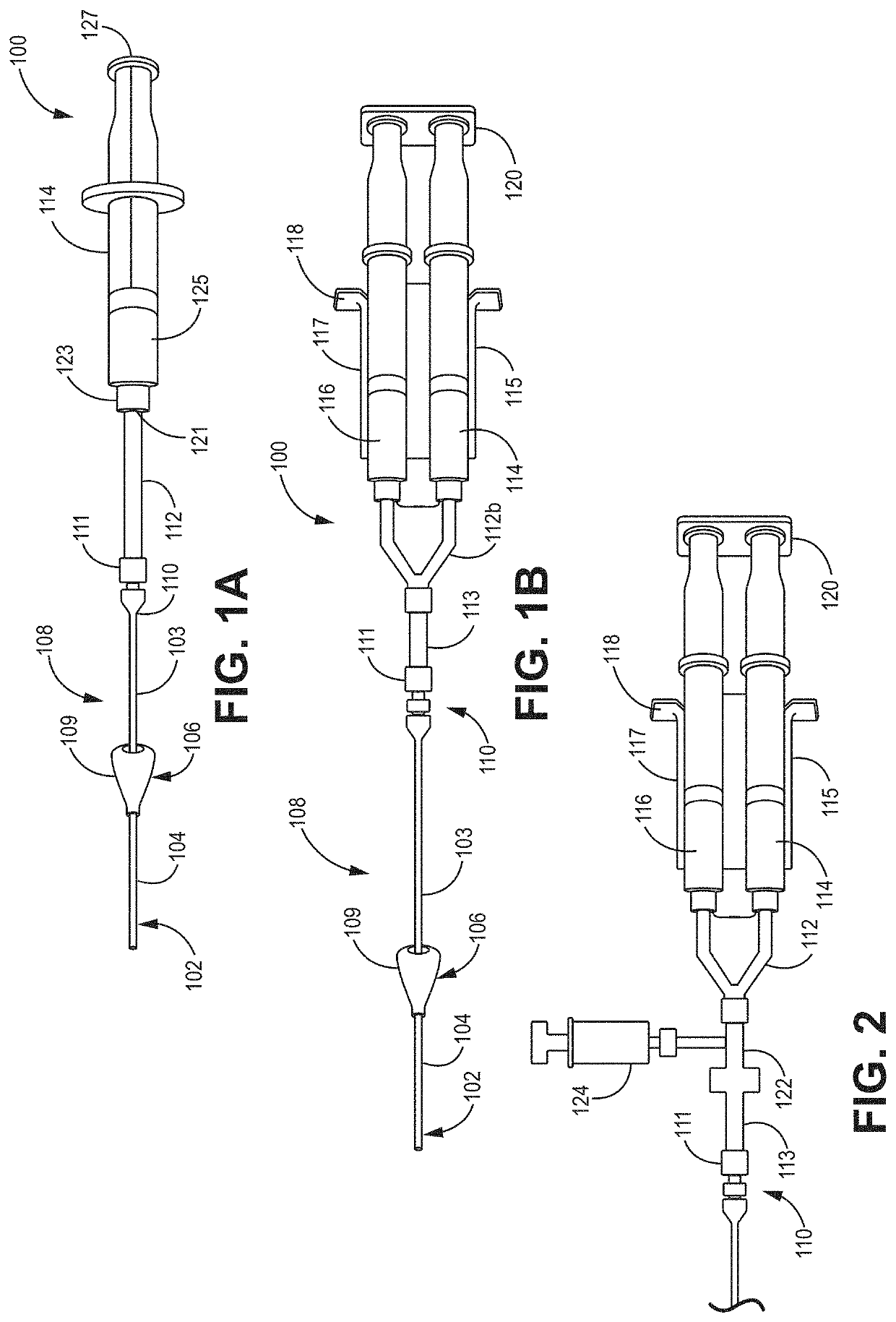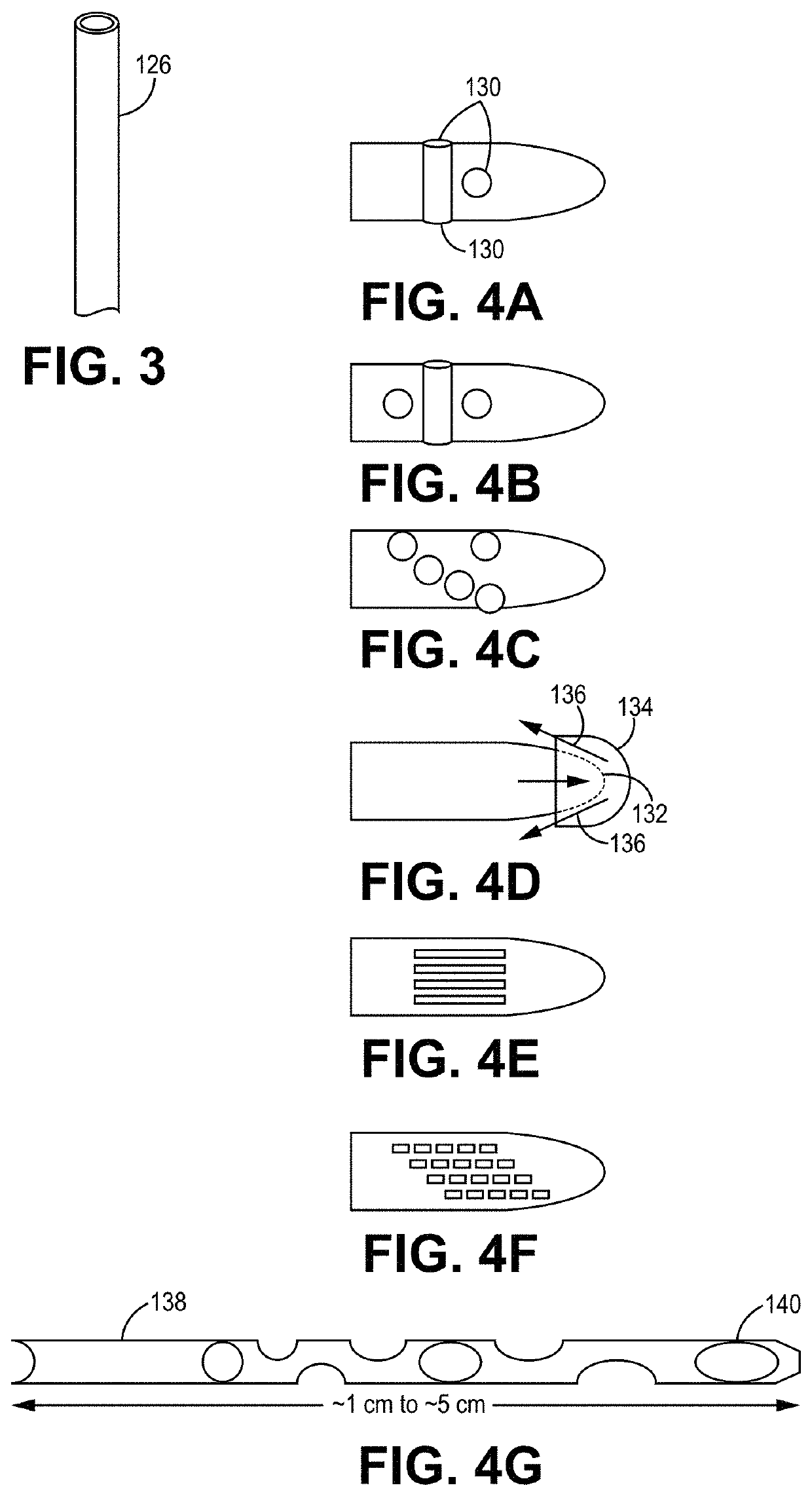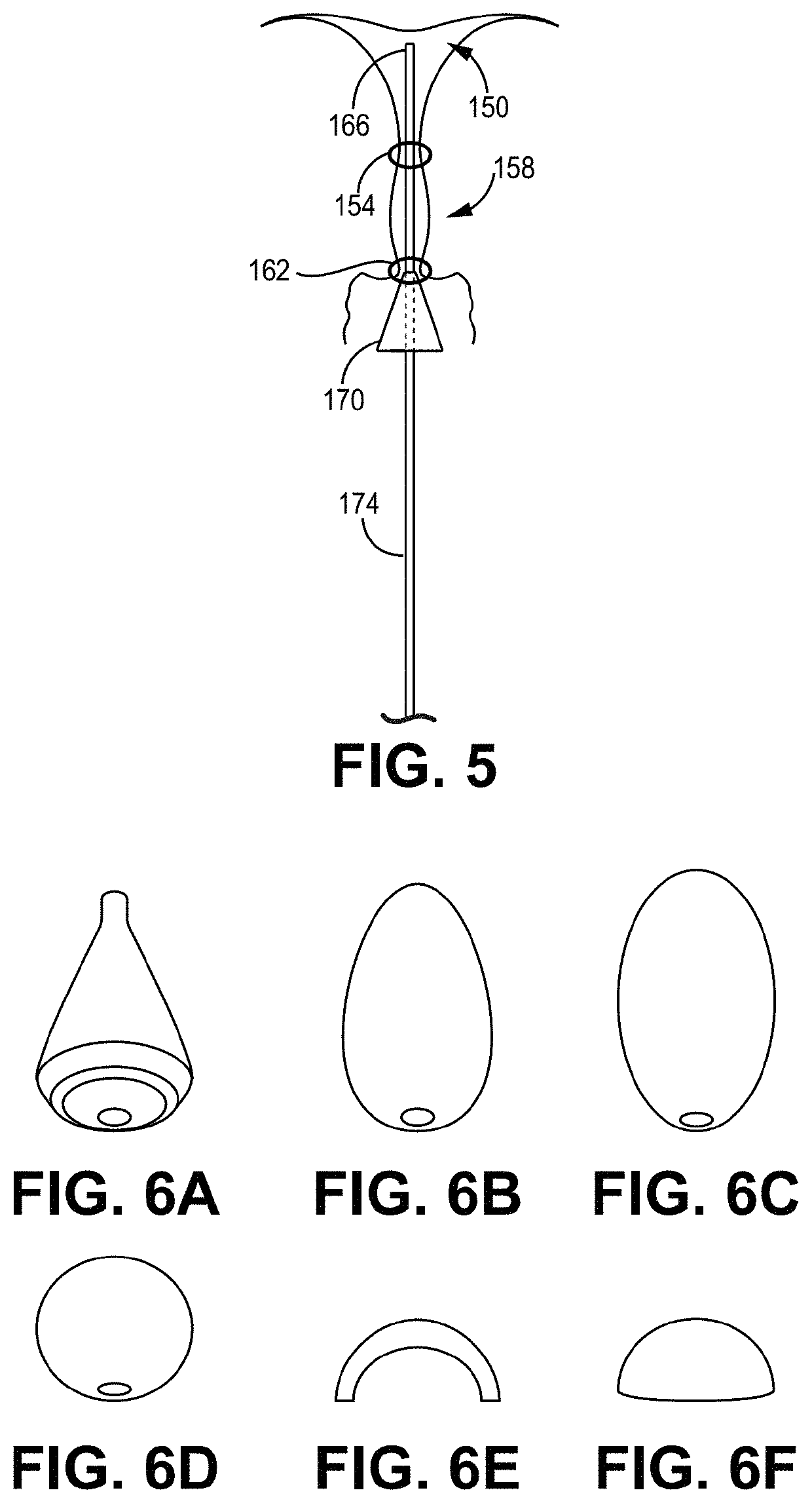Transcervical access systems for intrauterine fluid exchange, such as placement of hydrogels formed in situ
a technology of intrauterine fluid exchange and access system, which is applied in the direction of catheter, application, infusion syringe, etc., can solve the problems of high rate of adhesion re-formation, pain and debilitating medical problems, and failure of medical intervention
- Summary
- Abstract
- Description
- Claims
- Application Information
AI Technical Summary
Benefits of technology
Problems solved by technology
Method used
Image
Examples
example 1
Studies
[0168]This example illustrates the efficacy of a transcervical access system via a benchtop study with a uterine model.
[0169]In this example, a benchtop uterine model with a clam-shell design was used. The uterine model consisted of a uterine cavity shaped mold in each side of a plastic clam-shell case. When closed, the model had a circular opening and a tubular space at one end, which simulated the cervix, and an internal triangular space which simulated the body cavity of the uterine cavity.
[0170]In this example, the closed uterine model was prefilled with saline using a syringe or a catheter to simulate residual fluids in the uterine cavity that may be present after a transcervical hysteroscopic procedure. The experimental design allowed for testing the efficacy of the transcervical access system with respect to dilution resistance. A transcervical access system was assembled similar to the image in FIG. 1B. A set of first solutions were prepared as a mixture of an electro...
example 2
i-hysterectomy Comparative Study
[0175]This comparative example illustrates the use of an existing transcervical catheter to delivery hydrogel into a human uterus.
[0176]Six human patients were part of this study. For each patient, a modified Cook® Goldstein Sonohysterography Catheter was used. The Cook Goldstein Sonohysterography Catheter has a movable acorn-shaped positioner that can be positioned along the catheter, with ink bands located on the catheter as reference marks. The catheter was connected via a luer lock to a dual syringe assembly as described below. In this study, the Cook Goldstein Sonohysterography Catheter was modified by cutting off the catheter at a location proximal to both the round closed tip and the oval sideport. As modified, the catheter had an open port at the distal tip.
[0177]For the study, six female patients were chosen. Patient selection was based first on a determination that a hysterectomy was medically needed for the patient and second on the willing...
example 3
terus Benchtop Study
[0182]This example illustrates the efficacy of a transcervical access system to deliver hydrogel to a human uterus via an ex-vivo uterus benchtop study.
[0183]In this example, an excised human uterus was obtained according to standard medical research protocols. The weight of the ex-vivo uterus was 101 grams.
[0184]A transcervical access system similar to the image in FIG. 1B was used. Each syringe had a volume of 10 ml. A set of first solutions were prepared as a mixture of an electrophilic precursor and a nucleophilic precursor, with a 1:1 ratio of reactive ester end groups to reactive amine end groups for each formulation. A 5 ml aliquot of the first solution in 20 mM monobasic buffer solution, pH 4 was drawn into a first syringe. Into a second syringe, 5 ml of a pH 9.9 sodium borate / sodium phosphate dibasic accelerator solution was drawn. In each case, the first solutions were colored with a dilute concentration of FD&C blue #1. The second solutions were uncolo...
PUM
| Property | Measurement | Unit |
|---|---|---|
| Length | aaaaa | aaaaa |
| Length | aaaaa | aaaaa |
| Length | aaaaa | aaaaa |
Abstract
Description
Claims
Application Information
 Login to View More
Login to View More - R&D
- Intellectual Property
- Life Sciences
- Materials
- Tech Scout
- Unparalleled Data Quality
- Higher Quality Content
- 60% Fewer Hallucinations
Browse by: Latest US Patents, China's latest patents, Technical Efficacy Thesaurus, Application Domain, Technology Topic, Popular Technical Reports.
© 2025 PatSnap. All rights reserved.Legal|Privacy policy|Modern Slavery Act Transparency Statement|Sitemap|About US| Contact US: help@patsnap.com



